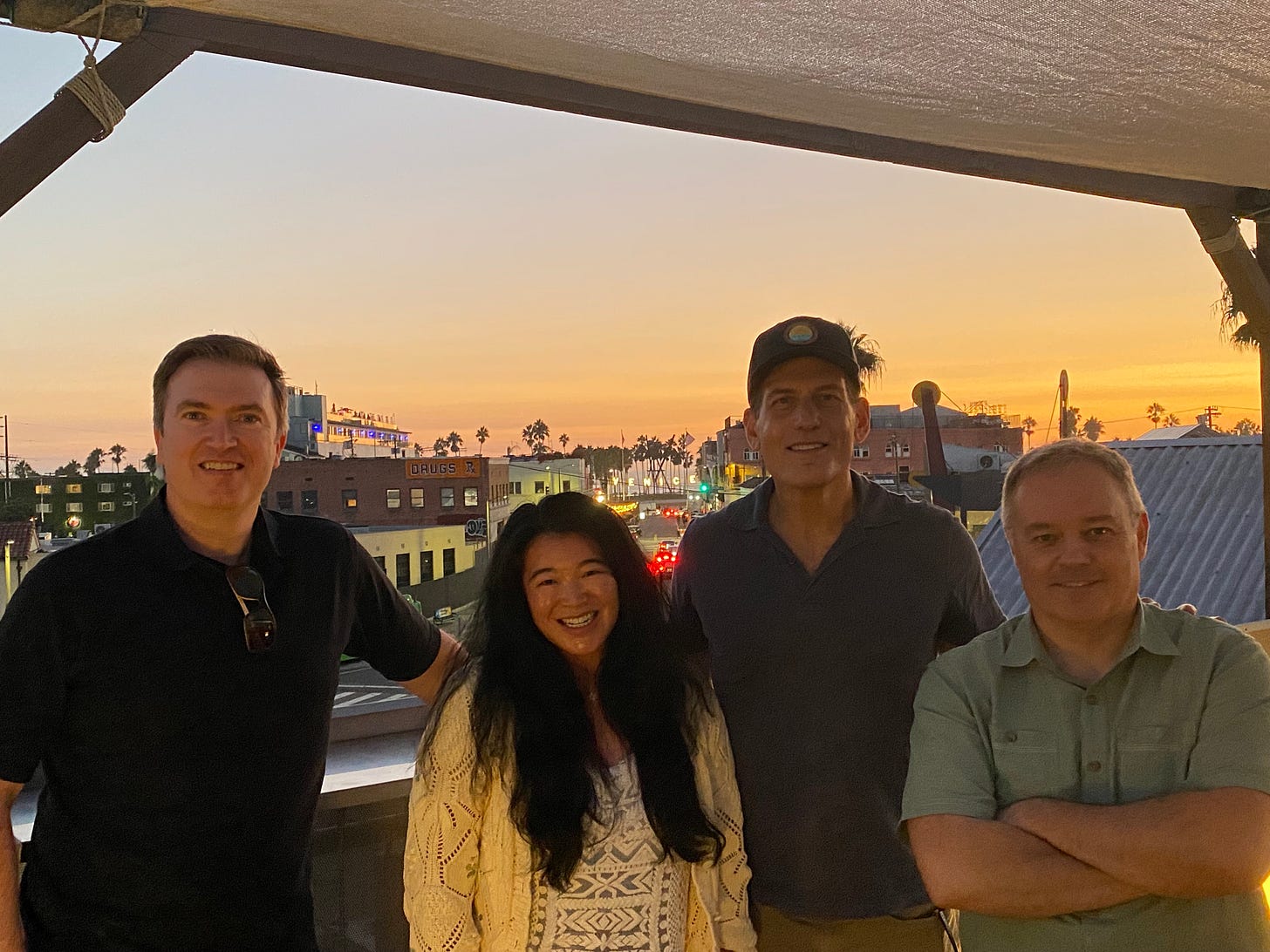Spotlight: Michael Mealling - General Partner @ Starbridge Venture Capital
How to achieve an impressive return in spacetech, understand the Integrated Space Plan for smarter investments, explore the 'Starship Singularity,' and master the art of cold emailing VCs.
Issue 82. Subscribers 11 220.
Get featured in our VC Spotlight! Connect with us at hello@spaceambition.org to showcase your visionary work.
Summary
Average check size: $1,000,000
Stage: Seed through B. We invest when we see a clear path to a valid return and some proof of product/market fit
Geography: Global but mostly US
Sectors: Space and space adjacent
Notable portfolio companies: Axiom Space, Umbra Space, Lynk Global, AlumaPower, SpaceX, Commonwealth Fusion
Your first fund achieved an impressive IRR 50% and MOIC 9.95x. What's the secret behind this success?
It's a combination of having been in the space sector for over two decades and experiencing the cycles both economically and bureaucratically. Participating firsthand in the rise of the commercial sector has been both eye-opening and a privilege. A significant part of our process is looking deeply into market structure to see where the opportunities really are. As with any technology sector, there is a tremendous amount of hype. In this case, however, the hype also comes from NASA and Congress. Knowing what is real and what isn’t is important. But honestly, we couldn’t do what we do without our network of friends in the business. It basically boils down to being nice and being involved in helping to grow the industry.
You base your investment decisions on the Integrated Space Plan (ISP). Can you explain this approach? Which areas do you predict will experience growth in the next decade?
The ISP informs our analysis but it can quickly become out of date. However, it does help us identify gaps where opportunities should exist. For example, when we put Starship on the ISP but couldn’t identify any companies or missions that could use it, we raised the issue with the space sector at large. We called it the 'Starship Singularity'. But now we have companies showing up that can use it, and we can use the ISP to analyze if there is a customer and when those customers might show up. “Build it and they will come” comes from a great baseball movie, but it's a terrible business model.

You coined the term "Starship Singularity." What does this mean, and what are your expectations for Starship?
While the capabilities of SpaceX’s Starship are something the industry has desired for a long time, now that it is becoming a reality we are discovering that very few actually knew what to do with it. When we speak with entrepreneurs and investors, there's a distinct inability to describe what the business environment would look like post-Starship. Like the “technological singularity” term, we use the term ‘singularity’ as a way of describing the inability to ‘see’ beyond the event horizon of a black hole.
We're seeing companies like Varda and Gravitics build businesses specifically for Starship, but those are around existing business models. We look forward to seeing businesses that no one has ever seen before.
Your team structure is unique for a space VC, comprising hedge funds, entrepreneurs, and operators. How does this give you a competitive advantage?
Fundamentally it helps us understand both sides of our business: the investor and the startup. That also means we have access to networks of people and companies that rarely overlap. We often find ourselves in the middle acting as translators. Most of that time is explaining to the finance world why this industry is growing and explaining to space entrepreneurs how investors think about their business. That last one is incredibly important to anyone starting a business: you need to deeply understand how your business looks from a financial return perspective.
How do you source investment opportunities? What are your thoughts on cold emails?
We source investments by speaking with our portfolio company founders and employees, friends from the space community, and the financial sector overall. We also get a fair amount of inbound communication from those looking for investment. We often get entrepreneurs in between gigs coming to us during the ideation phase to get our perspective, especially ones who were at one of our previous investments. Those are particularly fun because they have the experience to know what works.
Cold emails are fine, but they do need to understand who they are sending the email to. I get cold emails pitching everything from longevity drugs to social network apps. If you are sending me a cold email for a space company, give me a three to four-word summary of what you’re pitching so it can make it through the filter.
The best way to get our attention is to quickly and as succinctly as possible pitch your business, not your technology. I had this wonderful pitch a few months ago where the founder started off the call talking about the business model. We didn’t get into the technology behind it until the last ten minutes. I remind all entrepreneurs: Your technology is not your business. Your business is solving a customer problem as profitably as possible.
Which company in your portfolio has performed the best?
This should come as no surprise to anyone. There are actually two: Umbra and Axiom. They are roughly at the same level of performance.
If you were to start a company today, where would you focus to build a unicorn?
To build a unicorn, you have to build something that is 10 times better than what anyone else offers for anyone to want to buy that company’s stock at that price. To do that, you start with some legacy and sclerotic industry and start from scratch with an understanding of its ultimate purpose. Then, using first principles thinking, determine what the ultimate solution would be for that industry and then do.
Thank you, Michael!
People always ask us what the business case is for setting foot on Mars, the Moon, and beyond. We believe those cases will emerge along the way. Too few people across the globe are thinking about them now. The same applies to Starship. We believe that in the future, we will find many unique applications. Remember, 20 years ago, you could hardly imagine any business case for neural networks and LLMs. Look how they are disrupting industries now. We believe something similar will happen with SpaceTech. If you have any unique applications or ideas, please shoot us an email at hello@spaceambition.org; we’d be happy to discuss them.








